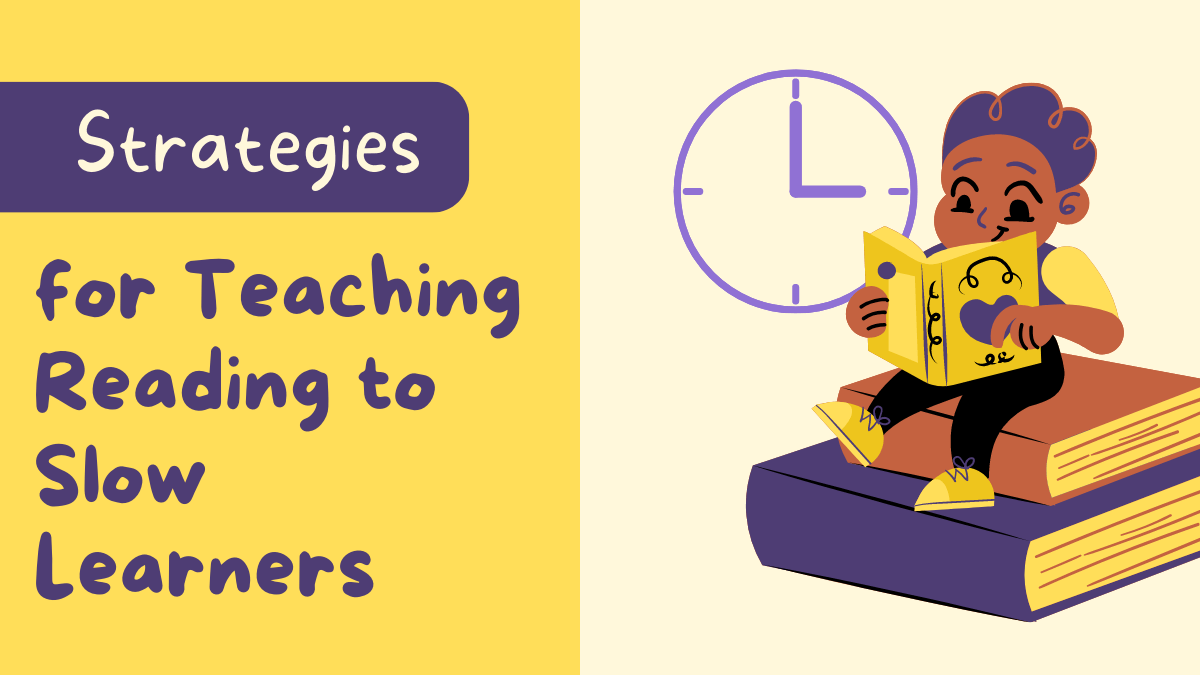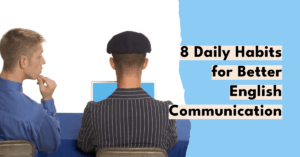Reading is a fundamental skill that is essential for academic and personal success. However, for some students, reading can be a challenge, especially for slow learners. Slow learners are students who have difficulty processing information and retaining it for an extended period of time.
They often struggle with reading comprehension, fluency, and accuracy, which can significantly impact their academic performance and overall confidence in learning. As a teacher, it’s important to understand the challenges faced by slow learners and to provide effective strategies to help them improve their reading skills.
In this article, we will explore the challenges faced by slow learners in developing reading skills and provide practical strategies and guidance for teachers working with these students.
Our aim is to offer evidence-based and effective teaching strategies that are both empathetic and understanding of the challenges faced by slow learners. By doing so, we hope to help teachers create a supportive and effective learning environment that enables slow learners to thrive and achieve their full potential.
Table of Contents
Understanding the Learner
Before we go into teaching a slow learner to read, we first want to understand the learner. When it comes to teaching a slow learner to read, one of the most important steps is to understand the learner and their individual needs. Here are three key factors to consider:
A. Identifying the root cause of the learner’s reading difficulties: Slow learners can struggle with reading for a variety of reasons, including cognitive and learning disabilities, emotional or behavioral challenges, or a lack of exposure to reading materials. It’s important to identify the root cause of their difficulties before developing a plan of action.
B. Learning styles and preferences: Every learner is unique, and understanding their learning style and preferences can help you tailor your teaching approach to their needs. Some learners may prefer visual aids or hands-on activities, while others may respond better to verbal instruction or repetition.
C. Establishing a supportive and engaging learning environment: Slow learners can easily become frustrated or disengaged if they feel overwhelmed or unsupported. Creating a positive and supportive learning environment can help them feel more comfortable and motivated to learn. This could include providing positive feedback and encouragement, using engaging and age-appropriate reading materials, and incorporating fun and interactive activities.
By taking the time to understand the learner, you can develop a more effective and tailored approach to teaching reading. In the next section, we’ll explore some practical strategies for teaching slow learners to read.
10 Effective Teaching Strategies for Slow Learners
When working with slow learners, it’s important for you to employ teaching strategies that cater to their individual needs and help them grasp concepts effectively. Here are some strategies that can be helpful:
- Differentiated Instruction: Provide personalized instruction by tailoring the content, process, and product to suit the individual needs of slow learners. This may involve using various instructional methods, materials, and assessments.
- Multisensory Approach: Incorporate multiple senses (such as visual, auditory, and kinesthetic) into the learning process. For example, use visual aids, hands-on activities, and verbal explanations to reinforce concepts.
- Chunking and Simplifying Information: Break down complex information into smaller, manageable chunks. Present information in a clear and concise manner, using simple language and step-by-step instructions.
- Repetition and Reinforcement: Offer frequent opportunities for practice and review. Slow learners often benefit from repeated exposure to concepts and skills to reinforce their understanding.
- Visual Aids and Graphic Organizers: Utilize visual aids like charts, diagrams, graphs, and graphic organizers to represent information visually and enhance comprehension.
- Cooperative Learning: Encourage group work and collaboration among students. Slow learners can benefit from working with peers who can offer support, explain concepts, and provide different perspectives.
- Provide Extra Time: Allow slow learners additional time to complete tasks, assignments, and assessments. This reduces stress and gives them the opportunity to work at their own pace.
- Use Technology: Incorporate educational technology tools, such as interactive software, educational apps, and online resources, to engage slow learners and provide interactive learning experiences.
- Positive Reinforcement: Provide regular praise, encouragement, and rewards to boost the confidence and motivation of slow learners. Recognize their efforts and celebrate their achievements, no matter how small.
- Individualized Education Plans (IEPs): Collaborate with the student’s parents, special education teachers, and other professionals to develop an IEP that outlines specific goals, accommodations, and modifications to support the student’s learning.
Remember, slow learners have unique learning styles and strengths. It’s essential to create a supportive and inclusive learning environment where they feel valued and empowered to reach their full potential.
Strategies for Progress Monitoring and Assessment
As with any teaching endeavor, progress monitoring and assessment are key to ensuring that your students are making the most of their time in your classroom. However, when working with slow learners, it is even more important to set realistic and achievable goals and to conduct regular progress assessments to ensure that your teaching strategies are effective.
A. Setting realistic and achievable goals: When setting goals for slow learners, it is important to take into account their unique needs and abilities. Goals that may be realistic and achievable for one student may not be for another. Therefore, it is important to work closely with each student to determine what they are capable of and what they want to achieve. Setting small, incremental goals that build upon each other can be an effective way to keep slow learners motivated and on track.
B. Conducting regular progress assessments: Regular progress assessments are a critical component of teaching slow learners how to read. These assessments help you track your students’ progress and identify areas where they may be struggling. They also help you determine whether your teaching strategies are effective, or whether modifications are needed.
C. Modifying teaching strategies and goals as needed: As you monitor your students’ progress, you may find that some teaching strategies are more effective than others. Be willing to modify your approach as needed, and be open to feedback from your students. By adjusting your teaching strategies and goals to meet the needs of your slow learners, you can help them achieve their reading goals and build confidence in their abilities.
Remember, teaching slow learners how to read is a challenging but rewarding experience. By setting realistic goals, conducting regular assessments, and modifying your approach as needed, you can help your students make progress and develop the reading skills they need for academic and personal success.
You might also like: How to prepare yourself as a new teacher?
Collaboration with Parents and Guardians
One of the key strategies for teaching slow learners how to read is to establish a collaborative relationship with parents and guardians. By working together with families, teachers can provide more effective and comprehensive support for students who are struggling with reading. Here are some ways to establish effective collaboration with parents and guardians:
A. Establishing open and frequent communication with parents/guardians: Effective communication between teachers and parents/guardians is essential for creating a supportive learning environment for slow learners. Teachers should make an effort to establish regular communication with parents/guardians to keep them informed of their child’s progress, and to discuss any concerns or challenges. Regular parent-teacher conferences, progress reports, and emails can help facilitate this communication.
B. Providing guidance and support for at-home learning: Slow learners may require additional support and guidance outside of the classroom to develop their reading skills. Teachers can provide parents/guardians with resources and guidance for at-home learning, such as recommended reading materials, strategies for practicing reading skills, and ways to create a literacy-rich home environment. This can help reinforce the skills and strategies taught in the classroom and improve the student’s overall reading proficiency.
C. Encouraging parental involvement and participation: Encouraging parental involvement and participation can also be a powerful way to support slow learners. Teachers can involve parents/guardians in the learning process by inviting them to volunteer in the classroom, participating in school events, and providing opportunities for them to support their child’s learning at home. This can help create a more supportive and collaborative learning environment, and can also help reinforce the importance of reading skills for academic and personal success.
Related Read: Unlocking Your Teaching Potential: The Ultimate Guide to Being an Effective Teacher.
By working collaboratively with parents and guardians, teachers can help slow learners develop strong reading skills and achieve their full potential. Effective communication, guidance for at-home learning, and parental involvement are all key components of a successful approach to teaching slow learners how to read.
In conclusion, teaching slow learners to read requires patience, perseverance, and a willingness to experiment with different strategies until you find what works best for each individual student. By using evidence-based techniques, such as multi-sensory instruction and explicit phonics instruction, teachers can help struggling readers develop the foundational skills they need to become successful readers.
It’s important for teachers to remember that slow learners can make progress with the right instruction and support, and that developing strong reading skills is crucial for academic and personal success.
As you continue your efforts to help slow learners develop reading skills, remember to stay positive and focused on the progress that each student is making. Encourage your students to keep trying, and celebrate their successes, no matter how small.
In the future, it’s likely that new research will continue to uncover more effective strategies for teaching slow learners to read. By staying up-to-date on the latest findings and continuing to experiment with different techniques, teachers can help ensure that all of their students have the tools they need to succeed.





Pingback: How to Improve as a Teacher in 2024: A Guide for Lifelong Learning and Professional Development
Pingback: 15 Fun Activities for Slow Learner Students Based on Learning Styles!
Pingback: 7 Ways Teachers Can Empower Learners with Specific Learning Disabilities (SLD) - iccomipe
Pingback: The Ultimate Guide to Teaching Slow Learners: Strategies, Tips, and Resources - iccomipe
Pingback: What is Universal Design for Learning (UDL) and Why is it the Best Teaching Method for Slow Learners? - iccomipe